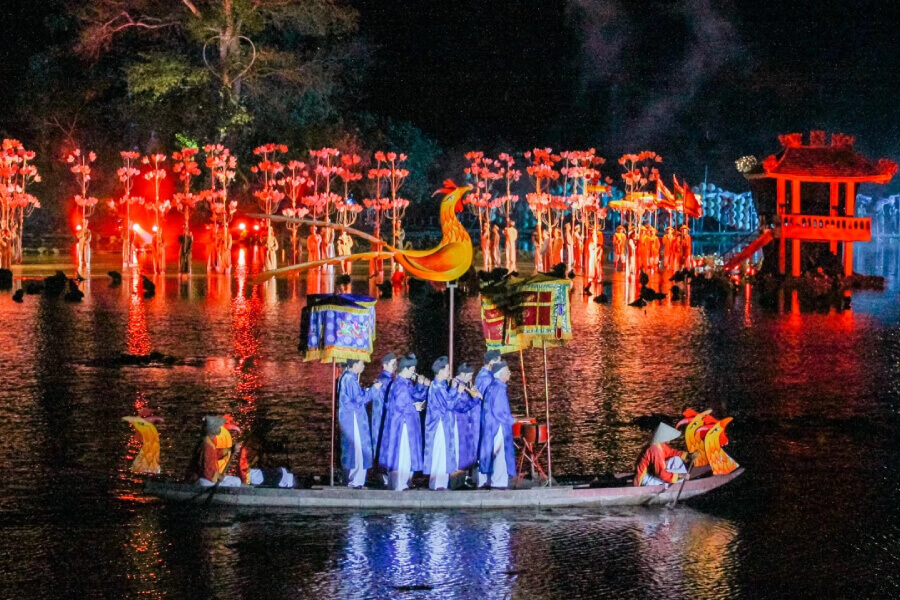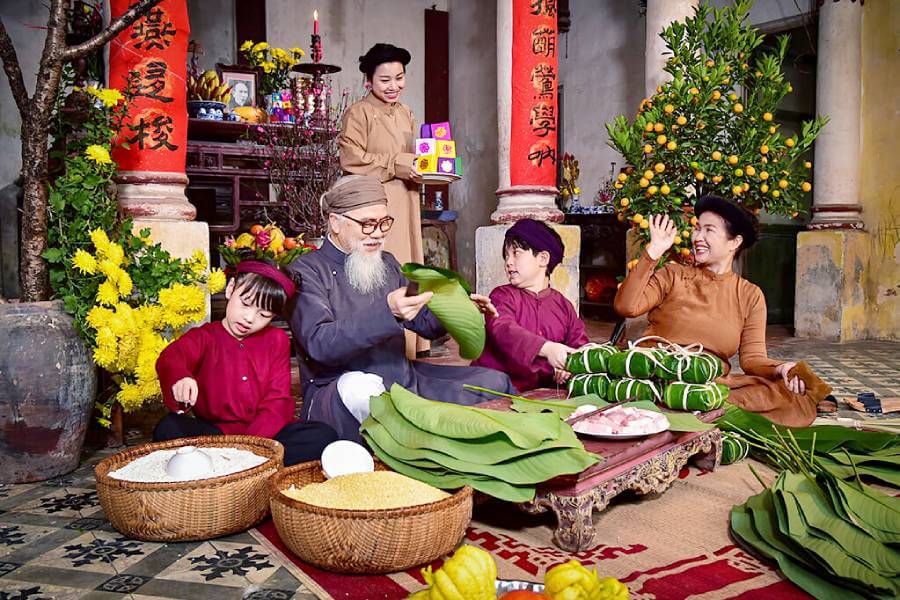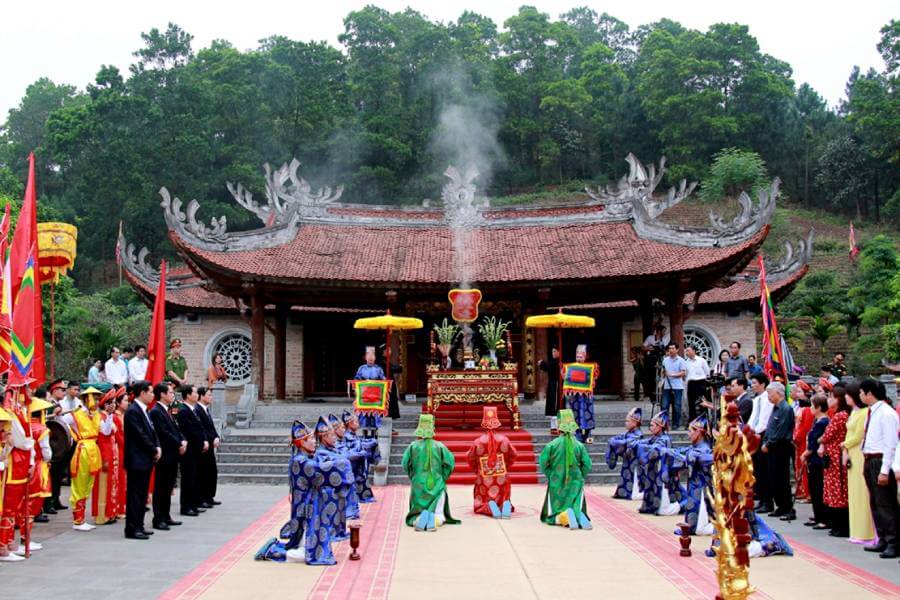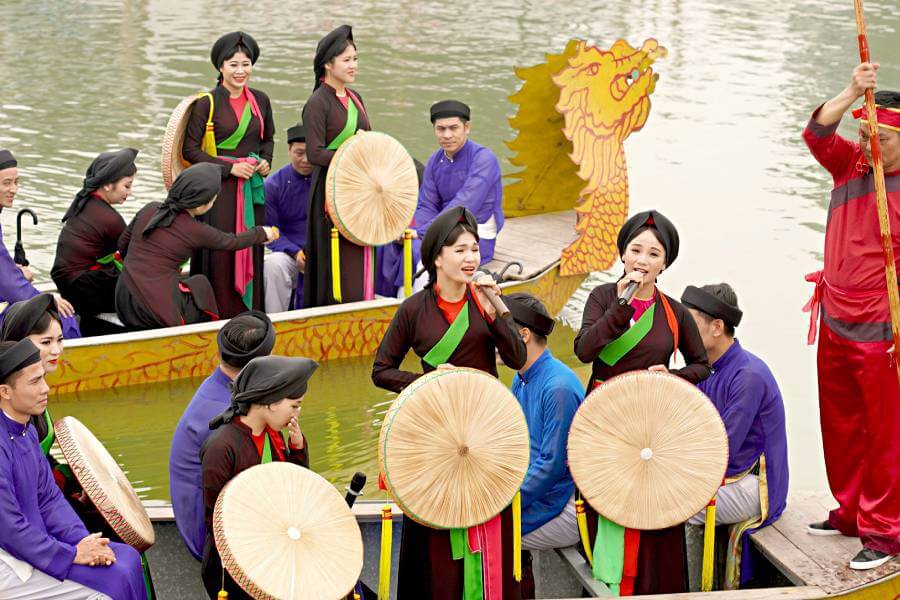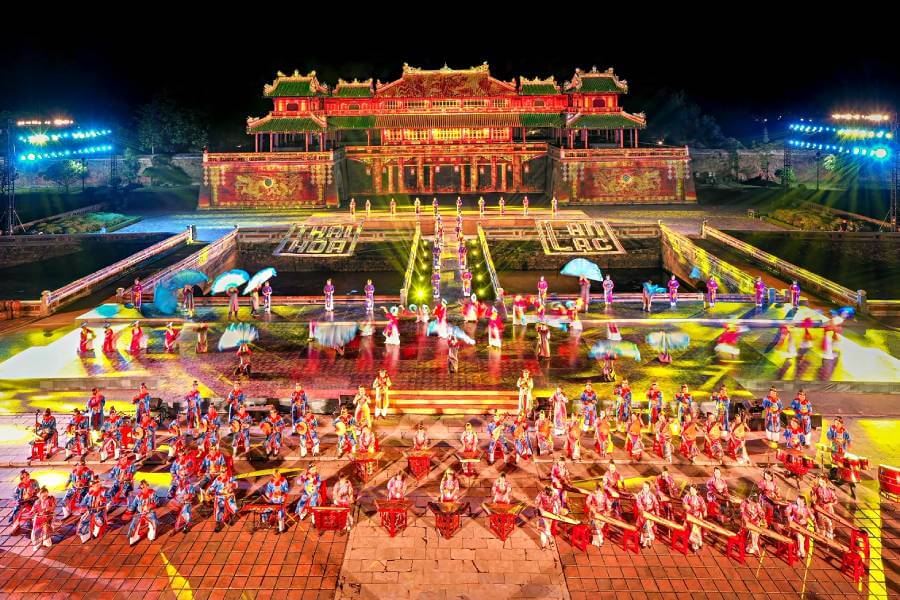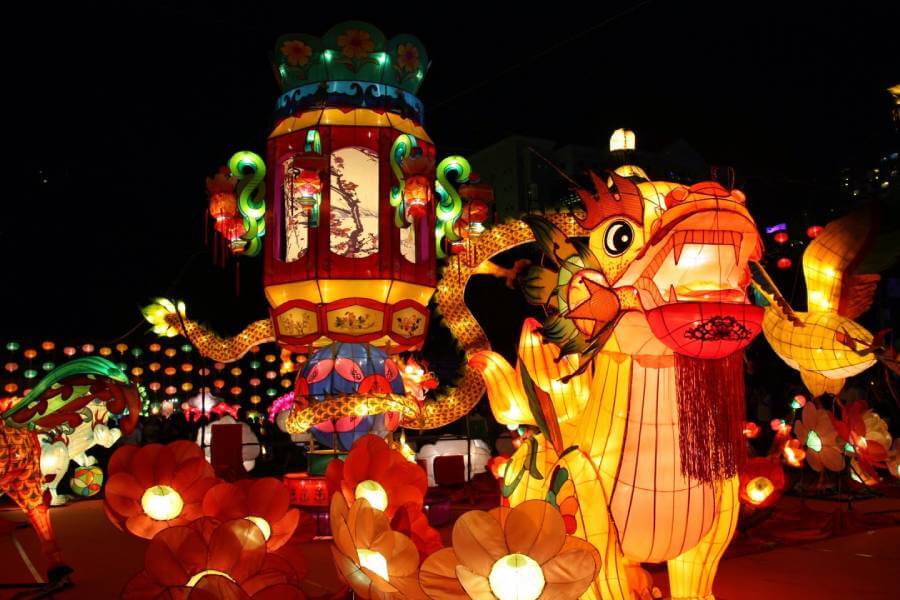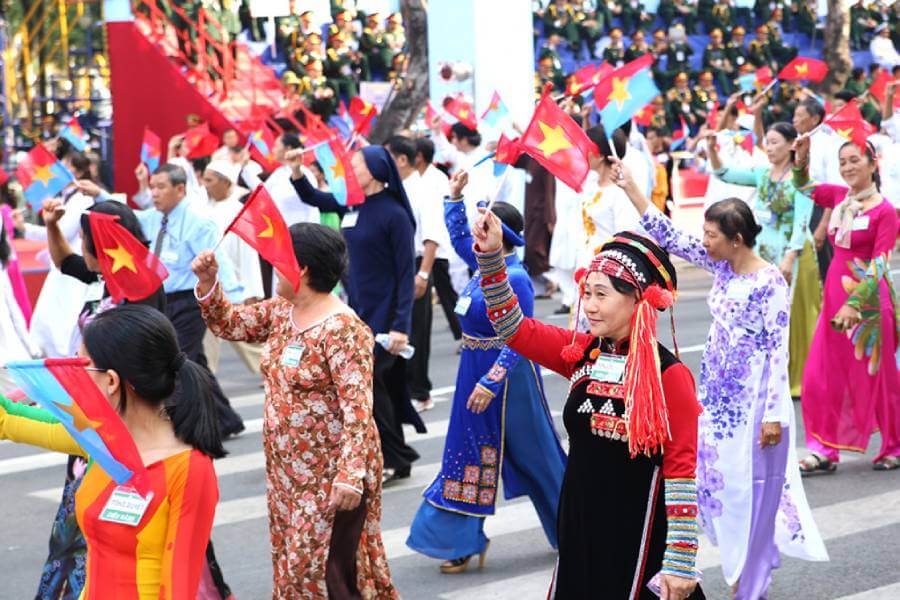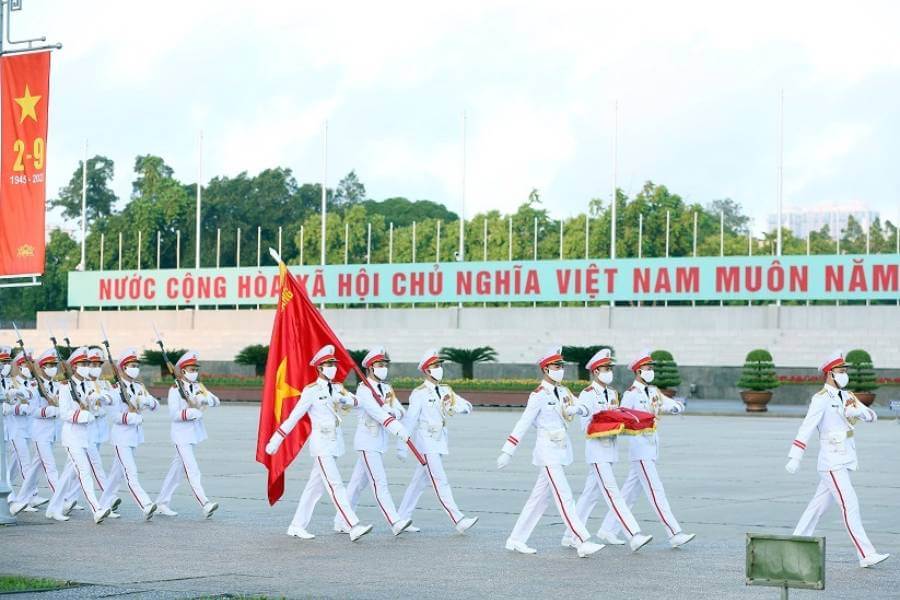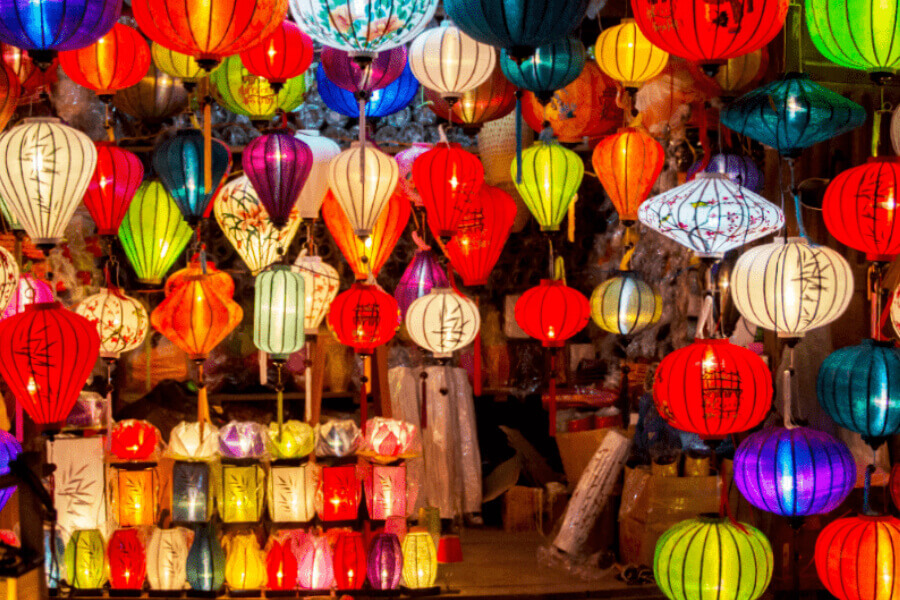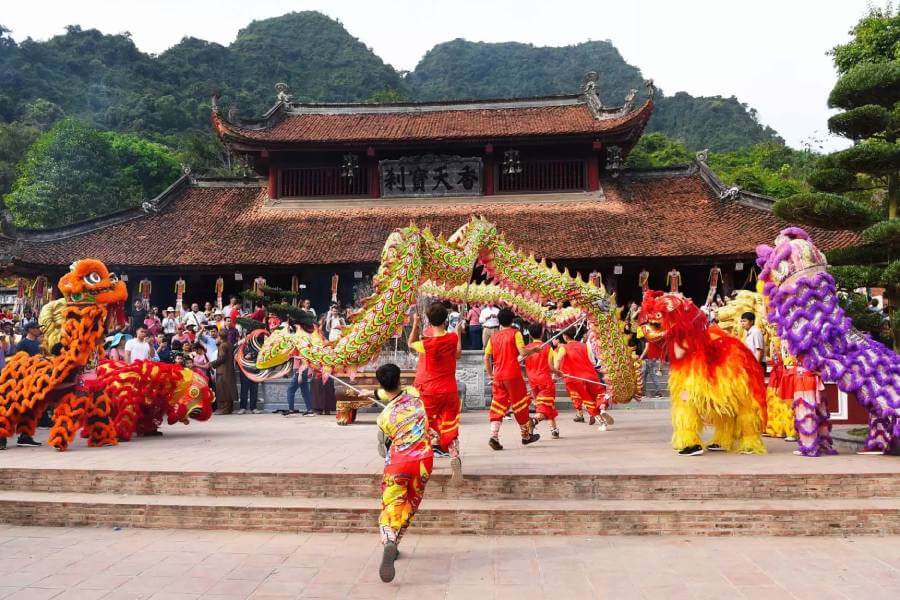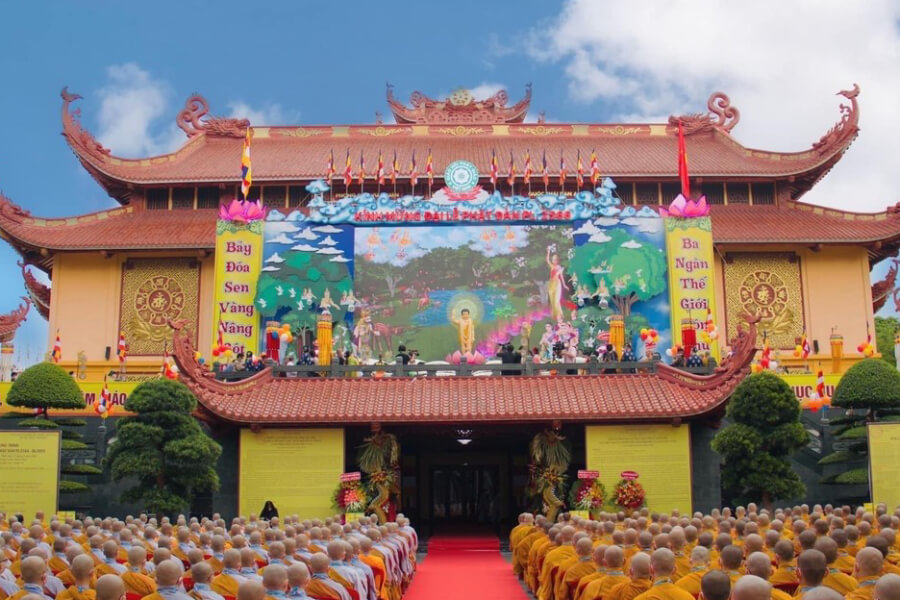Vietnam is a country with a rich cultural heritage, and experiencing its festivals and public holidays is one of the best ways to explore its traditions. These events give visitors an insight into Vietnam’s unique history and customs and offer an opportunity to witness how the Vietnamese people celebrate their significant occasions. From the Lunar New Year to the Mid-Autumn Festival, there are many exciting events to enjoy in Vietnam throughout the year. To make the most of your experience, consider booking your vacation with Viet Dan Travel – a trusted DMC in Vietnam, which can provide expert guidance and local knowledge to help you fully immerse yourself in the festivities.
Tet Nguyen Dan (Lunar New Year)
Tet Nguyen Dan is not only celebrated in Vietnam but also in many other countries with significant Vietnamese communities, such as the United States, Canada, and Australia. The festival is an opportunity for these communities to connect with their heritage, share their traditions with others, and celebrate their culture. In addition to the traditional customs mentioned earlier, Tet is also a time when many Vietnamese people return to their hometowns and villages to visit their relatives and reconnect with their roots.
Another important aspect of Tet is the role it plays in Vietnamese cuisine. The traditional Tet feast features a variety of dishes, such as “banh chung,” “thit kho,” and “dua hanh,” that are specific to the holiday. It is also a time when many people enjoy special treats such as candied fruits, seeds, and nuts. Tet Nguyen Dan is a vibrant and significant festival that plays a central role in Vietnamese culture and tradition. It is a time for celebration, reflection, and renewal and brings families and communities together to welcome the New Year with joy and optimism.
Hung Kings Temple Festival
Hung Kings temple festival is a public holiday and is held from the 8th to the 11th day of the third lunar month, which typically falls in late April or early May. During this time, the city is alive with traditional music, dance performances, and colorful processions that showcase the unique customs and traditions of the Vietnamese people. One of the most important events of the festival is the “Nam Giao” ceremony, which is a solemn national ritual where food and wine are offered to the ancestors as a symbol of respect and gratitude.
This ceremony is performed in the Hung Temple, which is dedicated to the Hung Kings, the legendary founders of Vietnam. Other traditional rituals and activities that take place during the festival include dragon and lion dances, folk games, and cultural performances. Visitors can also sample traditional Vietnamese dishes such as “banh chung,” a sticky rice cake filled with pork and mung bean paste, and “banh giay,” a flattened sticky rice cake topped with green bean paste and pork floss. The festival provides a glimpse into the deep connection that Vietnamese people have with their ancestors and their strong sense of national identity.
Lim Festival
The Lim Festival is a unique cultural event that celebrates the traditions and customs of Vietnam’s Red River Delta region. Held annually from the 12th to the 13th day of the first lunar month, the festival honors the legendary figure Ba Mu, who was known for her devout Buddhist practices at Lim Pagoda. The festival kicks off with a colorful procession featuring performers dressed in traditional costumes, making their way to Lim Pagoda to pay homage to Ba Mu. The procession is accompanied by the sound of drums and other traditional musical instruments, adding to the festive atmosphere.
One of the highlights of the Lim Festival is the display of martial arts and wrestling, which have been practiced in the region for centuries. These performances showcase the strength and agility of the participants and provide a thrilling spectacle for spectators. Another beloved feature of the festival is the “Quan Ho” folk songs, which are an important part of the cultural heritage of the Red River Delta region. These songs are sung by both male and female singers in groups and are known for their unique harmonies and intricate melodies.
Hue Festival
The Hue Festival is a biennial event that celebrates the rich history and cultural heritage of the ancient imperial city of Hue in central Vietnam. The festival attracts visitors from all over the world who come to experience the vibrant atmosphere and immerse themselves in the traditions of Vietnam. For those interested in fashion, the “Ao dai” Grand Show is a must-see event. This spectacular display features hundreds of models wearing the traditional Vietnamese “Ao dai” dress, showcasing the elegance and beauty of this iconic garment. In the evening, the “Oriental Night” Show provides a dazzling display of music, dance, and acrobatics, featuring performers from all over Asia. Visitors can enjoy the stunning choreography and intricate costumes while experiencing the vibrant energy of the festival.
Mid-Autumn Festival
The Mid-Autumn Festival, also known as Tet Trung Thu, is one of the most important festivals in Vietnam. It is a time for family and friends to come together and celebrate the harvest season, while also honoring their ancestors and praying for good luck and prosperity in the year ahead. During this festive time, the streets and homes of Vietnam are decorated with colorful lanterns and banners, giving the entire country a vibrant and joyful atmosphere. Vietnamese children, in particular, are especially excited about the Mid-Autumn Festival. They look forward to carrying their brightly lit lanterns around the neighborhood, often in the shape of animals or cartoon characters.
Another highlight of the Mid-Autumn Festival is the delicious mooncakes, a traditional pastry made with lotus seed paste and often filled with egg yolk or other sweet fillings. These round cakes symbolize the full moon and are an important part of the festival’s celebrations. In addition to enjoying mooncakes and carrying lanterns, children also participate in traditional lion dances, where performers dress in colorful costumes and mimic the movements of the lion. It is believed that the lion dance brings good luck and wards off evil spirits.
Reunification Day/Liberation Day
April 30th is a significant day in the history of Vietnam, as it marks the day when the country was officially reunited after decades of conflict and division. This day is known as Reunification Day in Vietnam, and it is a time for the country to reflect on its past, honor its heroes, and celebrate its unity and strength. On this day, the Vietnamese flag is flown in front of every home, office, and public building as a symbol of national pride and solidarity. People gather together to commemorate the sacrifices of the veterans who fought for their country’s freedom and to express their gratitude for the peace and stability that has been achieved since the end of the war.
Beyond Vietnam, the legacy of Reunification Day has also inspired and encouraged people in other colonial countries to fight against imperialism worldwide. The Vietnamese people’s struggle for independence and reunification serves as a powerful example of the resilience, determination, and courage that are necessary to overcome oppression and achieve freedom.
National Independence Day
September 2nd, 1945 is a historic day for the Vietnamese people, as it marks the moment when their country achieved independence and freedom from colonial rule. This day is celebrated throughout Vietnam as National Day, and it is a time for people to come together in unity and celebrate their country’s past, present, and future. The highlight of National Day is the celebration in Ba Dinh Square in Hanoi, where the Declaration of Independence was first read in 1945. The square is decorated with red and yellow banners, the colors of the Vietnamese flag, and posters of Ho Chi Minh, the country’s first president and a beloved national hero. Thousands of people gather in the square to watch military parades, cultural performances, and other festivities.
In addition to the celebrations in Ba Dinh Square, National Day is also marked by parades, fireworks, and other festivities throughout the country. People of all ages come together to sing, dance, and celebrate their country’s independence and freedom. National Day is a time for the Vietnamese people to reflect on their country’s past, present, and future, and to honor the sacrifices of their ancestors who fought for their freedom. It is a time to appreciate the progress that has been made since 1945, and to look forward to a bright and prosperous future.
Hoi An Lantern Festival
The Hoi An Lantern Festival is a beloved cultural event that takes place in the ancient town of Hoi An, located in central Vietnam. This monthly festival is held on the 14th day of the lunar calendar and is a celebration of the town’s rich cultural heritage and traditions. The festival is known for its vibrant and colorful display of thousands of lanterns that light up the town, creating a magical and unforgettable atmosphere. The lanterns, made of silk and bamboo, come in various shapes and sizes, from small handheld lanterns to elaborate displays and installations.
As the sun sets and the lanterns are lit, the streets of Hoi An are closed to traffic and filled with people carrying lanterns and candles, creating a sea of light and color. Traditional music and dance performances are held throughout the town, adding to the festive atmosphere. One of the highlights of the festival is the lantern floating ceremony, where people release small candlelit lanterns into the Thu Bon River. The river is transformed into a shimmering sea of light, with the lanterns representing hopes and dreams for the future.
Huong Pagoda Festival
The Huong Pagoda Festival, also known as the Perfume Pagoda Festival, is one of the most popular festivals in Vietnam. It is a Buddhist pilgrimage that takes place in the Huong Son Mountains, in the My Duc district of Hanoi, from the 6th day of the first lunar month to the end of the third lunar month (usually from February to April). The festival attracts thousands of visitors every year who come to pray for good fortune, health, and happiness. It is believed that if you make a pilgrimage to the Huong Pagoda during this time, you will receive blessings from the Buddha.
The festival begins with a colorful procession of boats on the Yen Stream, which leads to the Huong Pagoda. Visitors can choose to take a boat or hike up to the pagoda, which is located on top of a mountain. The journey can be quite challenging, as visitors have to climb steep stairs and walk through narrow caves to reach the pagoda. Once at the pagoda, visitors can explore the various temples and shrines, light incense, and offer prayers. There are also food and souvenir vendors throughout the complex.
Buddha’s Birthday
Buddha’s Birthday is a widely celebrated event in Vietnam, despite the country’s communist government. Taking place on the 8th day of the 4th lunar month, this festival sees devotees flocking to temples and pagodas across the country to offer fruit, flower garlands, and Vietnamese delicacies. The festival is especially popular in major cities like Ho Chi Minh City, Hue, and Hoi An, where street parades and prayer sessions attract thousands of visitors. Monks can be seen giving out gifts to the poor, homeless, and needy, while other rituals are performed in pagodas and temples, including washing Buddha’s pictures and statues, dropping flower pots into the river, and organizing Buddhism teaching sessions.
In the evening, the festival takes on a more serene tone as candles are lit on floating lotus flowers and set out into rivers across Vietnam. Buddhists send these candles down the river with prayers, creating a stunning display of flickering light on the water. Apart from its religious significance, the Buddha’s Birthday Festival is also an excellent opportunity to experience local culture and cuisine. In Hoi An, street vendors sell delicious vegetarian dishes that are a must-try during this festive season. The Buddha’s Birthday Festival in Vietnam is a vibrant and joyous celebration that brings people together to celebrate the life and teachings of the Buddha, promote compassion and understanding, and enjoy the local culture and cuisine.

